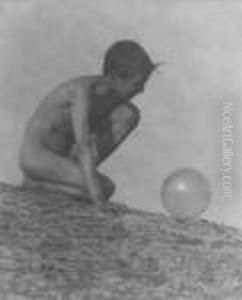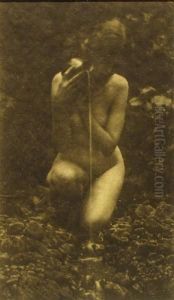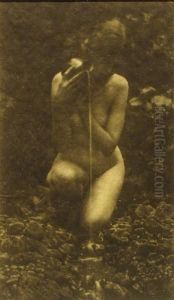Annie Wardrope Brigman Paintings
Annie Wardrope Brigman was an influential American photographer and poet, born on December 3, 1869, in Honolulu, Kingdom of Hawaii, to missionary parents. In the late 19th and early 20th centuries, Brigman became one of the most significant figures in the pictorialist movement in photography. This movement emphasized beauty, tonality, and composition over the documentation of reality, aiming to elevate photography to the status of fine art. Brigman's work is particularly notable for its ethereal quality and its focus on the female form in natural landscapes, often depicting women as strong, mystical figures intertwined with the rugged wilderness of the American West.
Brigman moved to Los Gatos, California, in the 1880s, and later to Oakland, where she began her career in photography. She was largely self-taught, developing her distinct style through experimentation and innovation. In 1902, she joined the Photo-Secession, an influential group of photographers led by Alfred Stieglitz that sought to promote photography as a legitimate art form. Brigman's photographs were featured in the group's publication, Camera Work, further cementing her status as a leading artist in the pictorialist movement.
Her images often required her to venture into difficult terrain in the Sierra Nevada mountains, where she would photograph herself or local women, whom she styled and posed among the rocks and trees. These photographs, characterized by their soft focus, intricate compositions, and allegorical content, were groundbreaking in their portrayal of women as powerful and elemental beings, harmoniously connected to the natural world.
Beyond photography, Brigman was also an accomplished poet. Her poetry shared themes with her photographic work, celebrating the spiritual connection between humans and nature. In 1949, she published a collection of her poems titled 'Songs of a Pagan'. Throughout her career, Brigman received significant recognition and her work was exhibited in the United States and Europe. Despite her achievements, her legacy was somewhat overshadowed in the decades following her death on February 16, 1950, in Eagle Rock, California. However, recent years have seen a resurgence of interest in her life and work, recognizing Annie Brigman as a pioneering artist who challenged conventional representations of women and contributed significantly to the development of photography as an art form.


